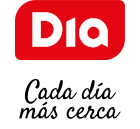ACCESIBILITY
Accessibility
Navigation aids
All pages contain links to aid navigation in text-only browsers and screen readers.
In turn, some web browsers such as Mozilla, Netscape 6 and Opera 7 present an auxiliary Navigation Bar to navigate the website using these links.
All tables have headers with scope attributes that allow screen readers to present information intelligently. In addition, when necessary, the tables also have titles (elements tag) and summary attributes to facilitate understanding.
Links
Most of the links whose text does not fully describe the destination have title attributes with a clarification.
When possible, links are written in a way that makes sense out of context. Some browsers (such as JAWS, Home Page Reader, Lynx, and Opera) can extract the list of links from the current page and allow the user to navigate from this list. Taking this into account, the links are not duplicated and if they are, it is because they access the same content.
There are no JavaScript pseudo-links. All links can be followed in any browser, even if javascript is disabled.
Visual design
The visual design has been done using CSS. If the browser or navigation device does not support style sheets, the content of the web remains fully readable thanks to its structural markup.
In this way, the site works well on all types of desktop and mobile devices with no extra work and no pre-processing.

